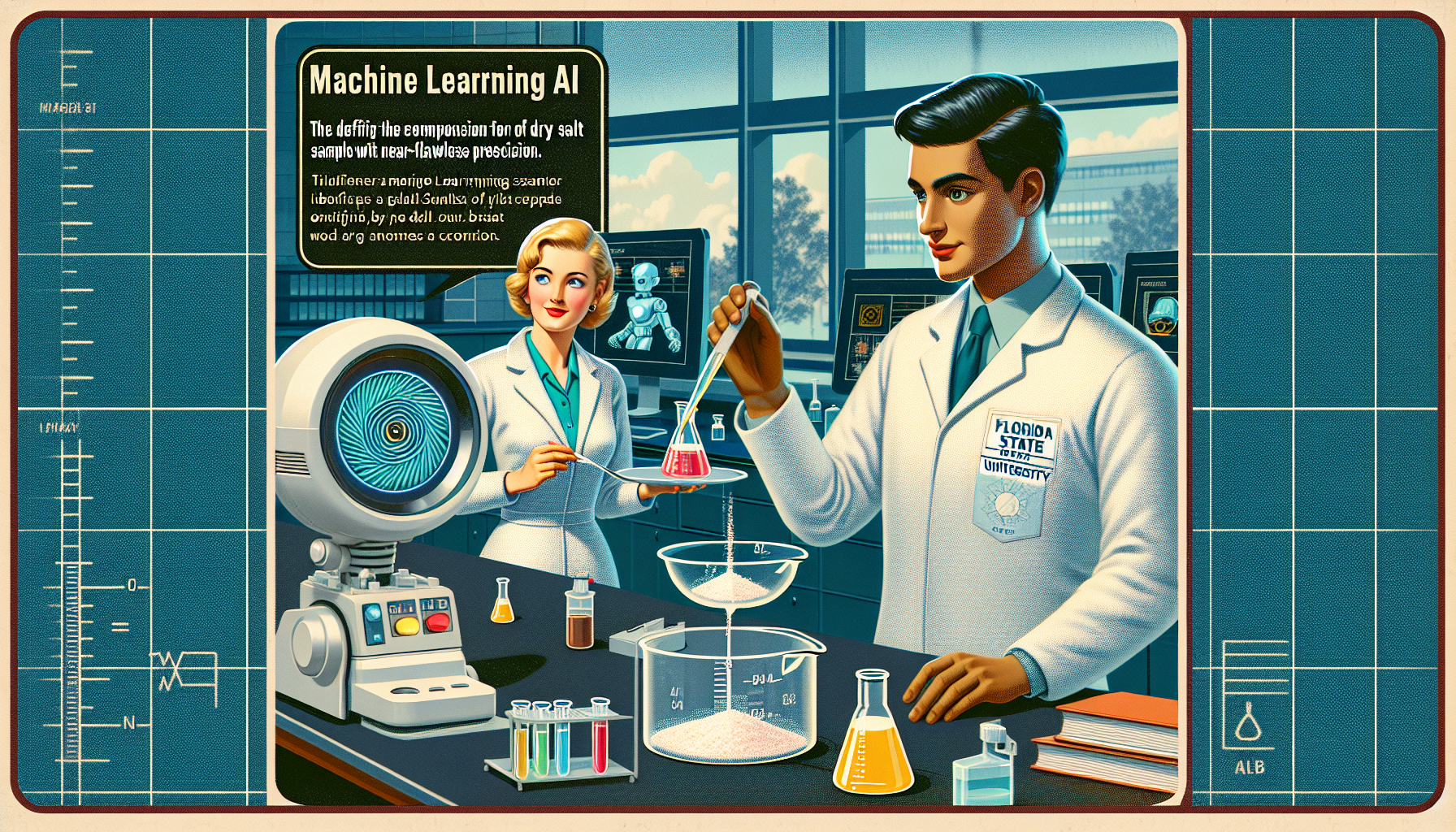In the world of chemical science, a team of dedicated chemists from Florida State University (FSU) has achieved a remarkable breakthrough. They developed a cutting-edge machine learning tool that can pinpoint the make-up of dried salt solutions with an outstanding 99% accuracy. By merging robotics with artificial intelligence (AI), this technology is set to revolutionize traditional methods of chemical analysis.
Background and Development
Imagine the challenge: Professor Oliver Steinbock and his team previously relied on manual techniques to figure out the chemical compositions in salt stain images. It was painstaking work, requiring the analysis of nearly 7,500 samples. But manual efforts were slow and often came with issues like inconsistent results.
The Robotic Drop Imager (RODI)
Enter the **Robotic Drop Imager (RODI)**, an innovative robotic creation that changes everything. RODI automates the sample preparation process, producing more than 2,000 samples daily. With this leap, researchers built an impressive library boasting over 23,000 images. This expansive dataset dramatically improved their machine learning model’s precision.
Machine Learning Analysis
Here’s how it works: Each image is distilled into grayscale, teasing out 47 key features like pattern area and brightness. These features are the building blocks for machine learning algorithms that sift through the data. The model doesn’t just recognize different salt types; it also distinguishes five levels of salt concentration with 92% accuracy.
Applications and Implications
The potential uses for this technology are vast and inspiring:
– **Space Exploration**: Envision equipping space missions with just cameras and AI. On-site chemical analysis becomes possible, eliminating the need for expensive gear or bringing samples back to Earth.
– **Law Enforcement**: Quick, budget-friendly initial drug tests can now assist crime scene investigations, making the process more efficient.
– **Medical Diagnostics**: In places where hospitals can’t access high-end chemical analysis tools, this simple yet effective method can play a crucial role in helping diagnose patients.
Democratizing Chemical Analysis
This breakthrough holds the promise of democratizing chemical analysis. Traditionally, such procedures demanded high costs and specialized skills. But now, a simple photograph is all it takes. As technology progresses, the integration of these capabilities into everyday applications is within reach. A new era of scientific discovery and exploration is on the horizon.
This remarkable integration of robotics and machine learning in chemical analysis highlights a transformative path forward. It offers enhanced precision and efficiency while making complex analyses more accessible. The pioneering work by FSU’s researchers marks a significant turning point, suggesting a future where intricate analyses are not just efficient but also economically feasible, heralding a pivotal shift in the landscape of scientific research.

Leave a Reply